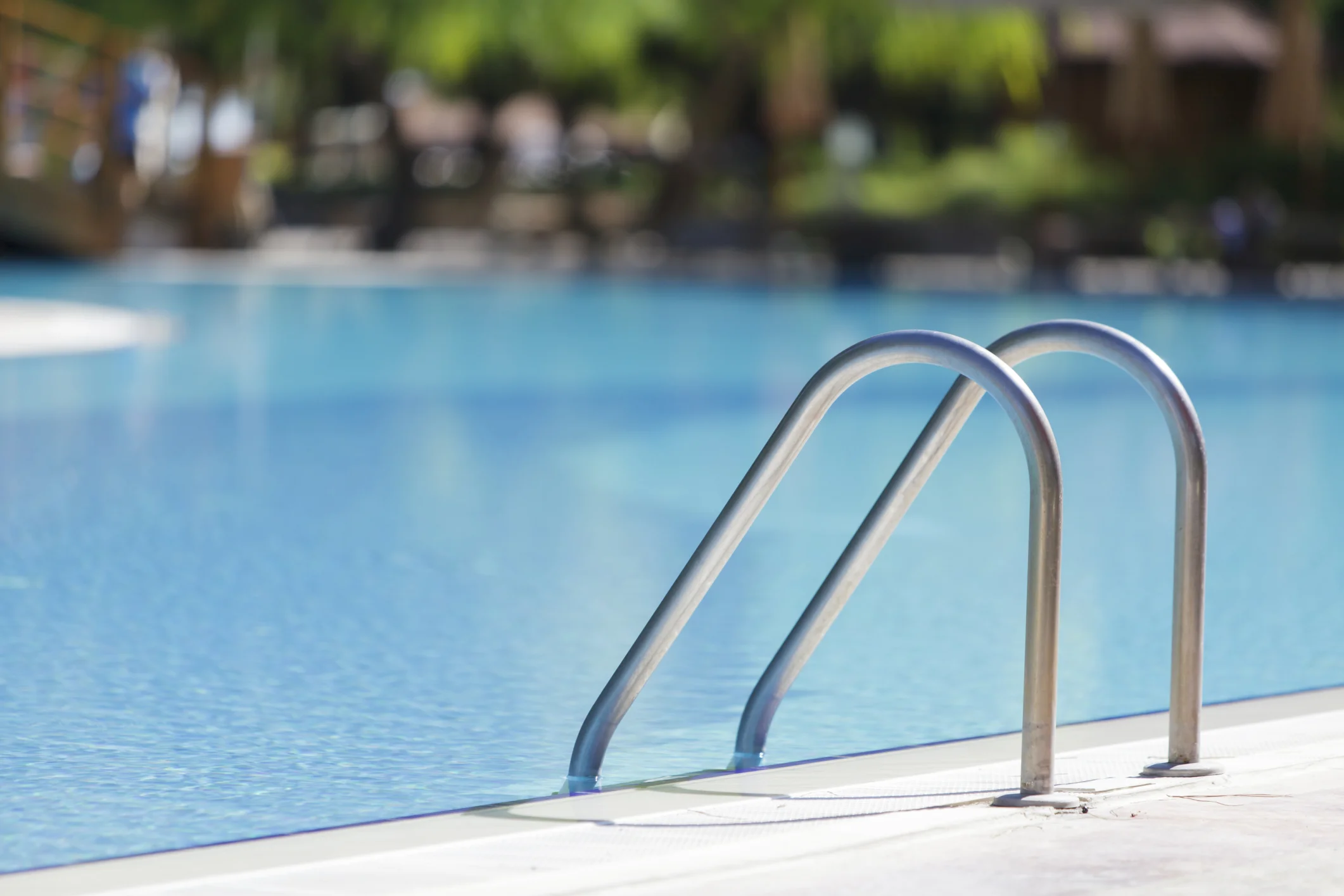In the blog post that I wrote last week, I described the sheer fear I felt in those first few moments of swimming again.
Without hands or feet, and without any prosthetics to help me, I didn't know if or how I'd keep my head above water, even in the shallow end. But I faced another, possibly greater fear before I even went near the water.
I'm embarrassed to mention this particular fear. But if I am going to be honest on this blog, I have to say it. And there's no flowery way to put it. No talking around it.
I was simply afraid of unveiling my broken body. I didn't want to undress and remove my prosthetics because I was deathly afraid of allowing anyone to see just how pitiful and helpless I look.
My prosthetics normally hide the "stubs" on the ends of my limbs; and, without them, I am naked and vulnerable.
Before tackling this fear, I could only imagine what I would look like, sitting at the edge of the pool: a little, helpless, "handicapped" girl, that someone had possibly left behind.
Being a (relatively) new amputee, I am often shocked myself when I see my own body.
So it is understandable that strangers give me that second glance...
But I do notice it.
I see the stares.
They are not mean-spirited stares. Yet, they are still unsettling. And I certainly don't want to attract more of them. Facing the world without something covering my wounds invites even more stares!
Kids, in particular, stare at me. Or maybe they are just less practiced at hiding their reactions - Most times, children are truly just curious...Who is that? What is that? Could it hurt me? Could it happen to me? Could it happen to my mom? As they look more closely, they often become fearful. They hide behind their moms. Anyone who knows how much I love kids (and not just my own), would tell you just how devastating this is to me.
Yet, most of my hesitation about swimming is on an embarrassingly superficial and vain level. Seeing my body and its challenges reminds me that achieving my "idea" of physical beauty is now even less of a possibility. I have a physical deformity, after all. I am not even whole! And I have many, many inexplicable scars. (I've never asked the doctors how some of them appeared because I truly don't want to know.)
I could never look beautiful. Or sexy. Or strong.
It certainly gives a new layer to dreading bathing suit season.
To think that I used to worry about how I looked in a bikini, or if I should even wear one...
Before buying a new (always black) bathing suit, I'd look in the mirror with angst. I'd examine the circumference of my thighs. I'd pinch the flab on my tummy. And I'd lament my "runner's chest," flattened with each mile.
I was at the gym nearly every day, trying to mold my body into some unnaturally tight and thin figure, without one ounce of fat or flubber. I did pushups and lifted many weights to build my chest, biceps, and shoulders. And the sit-ups. Oh, the sit-ups.
It all seems so ridiculous now.
So silly.
It does make me realize this: Everybody has something. Everybody has some physical characteristic that causes them shame. Some thing that weighs them down. Too fat. Too thin. Too short. Too long.
I guess my thing now is "too robotic," "too fake." (Although one could argue that more of my body is real than those Sports Illustrated Swimsuit models'...)
Unfortunately, we all hold ourselves to the ridiculous ideals that we see in the media. We spend so much time and energy trying to change ourselves. It is so "self-" centered; imagine if we spent this same time and energy on others - women could save the world! Still, I think we all do it, to some degree.
I used to keep my "arms" on while I was working out at the Y. I would use them to disguise my own arms, even though they'd make me uncomfortably hot. Now I just take them off. I know that some people will stare, regardless of what I do. They can just as well stare at my prosthetics as at my stumps. So I may as well be comfortable while they stare.
For me to wear a bathing suit now is a bold and courageous move. It says, "Yes, I am different. I am an amputee. So, stare all you want. I'll be over here enjoying my life."
Once I slip in to the pool, I realize how strong and amazing my body really is. I can still float. I can still swim, lap after lap. I can still enjoy life.
And that is beautiful.
Being beautiful is so much more important than looking beautiful.
So, what is the one fear that holds you back from doing something you love? That keeps you from enjoying your life? How can you "slip in to the pool" in your life?
For when you do, I think you'll find strong, amazing, beautiful things.




































